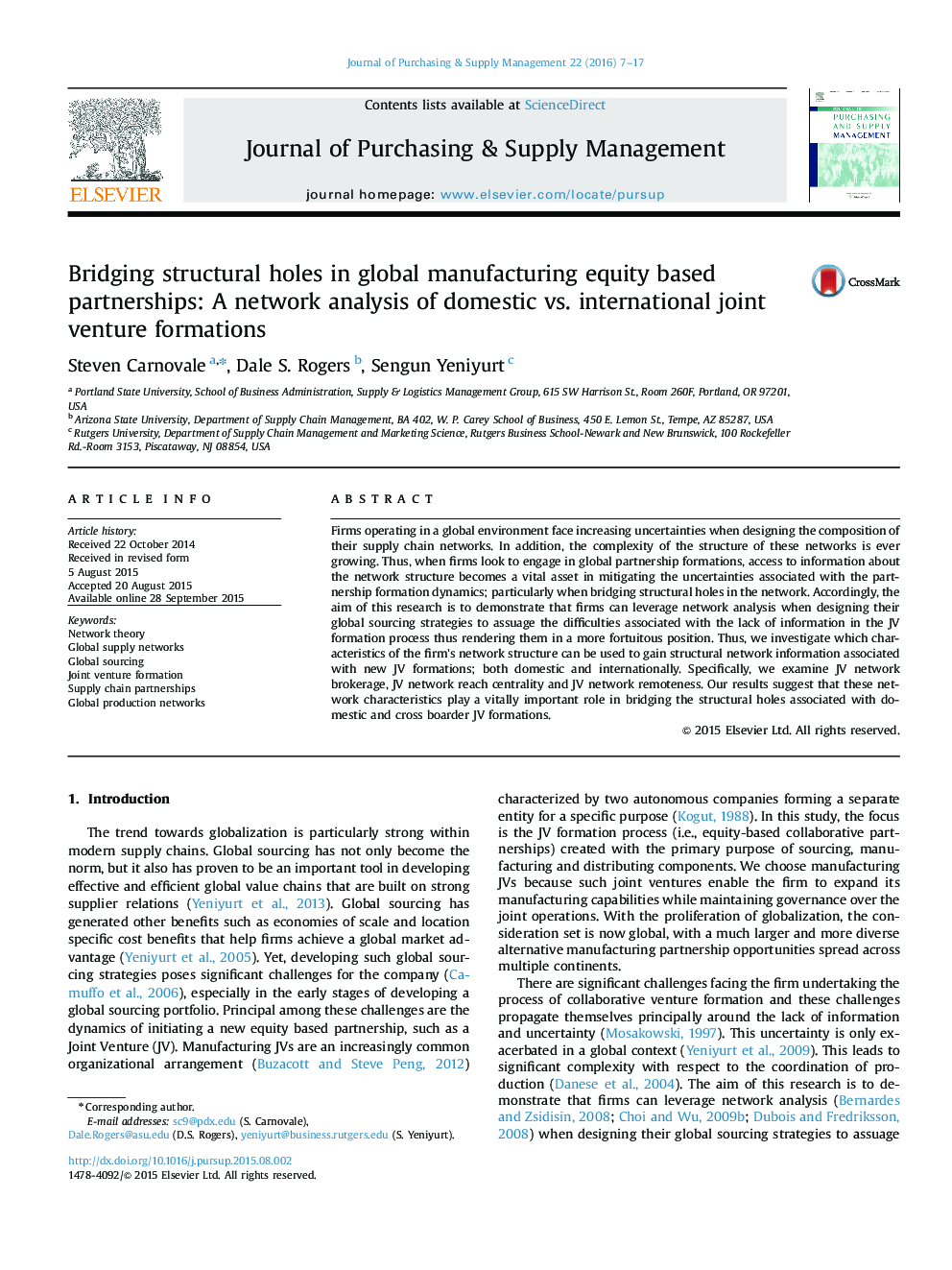| Article ID | Journal | Published Year | Pages | File Type |
|---|---|---|---|---|
| 1020706 | Journal of Purchasing and Supply Management | 2016 | 11 Pages |
•Analyzes equity-based global sourcing formations (JVs) using network theory.•Studies characteristics of the firm's network structure used to bridge structural holes in new JVs.•Provides an empirical test in the context of the global automotive industry.•Results support the role of network structure in easing the uncertainty of new JVs.
Firms operating in a global environment face increasing uncertainties when designing the composition of their supply chain networks. In addition, the complexity of the structure of these networks is ever growing. Thus, when firms look to engage in global partnership formations, access to information about the network structure becomes a vital asset in mitigating the uncertainties associated with the partnership formation dynamics; particularly when bridging structural holes in the network. Accordingly, the aim of this research is to demonstrate that firms can leverage network analysis when designing their global sourcing strategies to assuage the difficulties associated with the lack of information in the JV formation process thus rendering them in a more fortuitous position. Thus, we investigate which characteristics of the firm's network structure can be used to gain structural network information associated with new JV formations; both domestic and internationally. Specifically, we examine JV network brokerage, JV network reach centrality and JV network remoteness. Our results suggest that these network characteristics play a vitally important role in bridging the structural holes associated with domestic and cross boarder JV formations.
